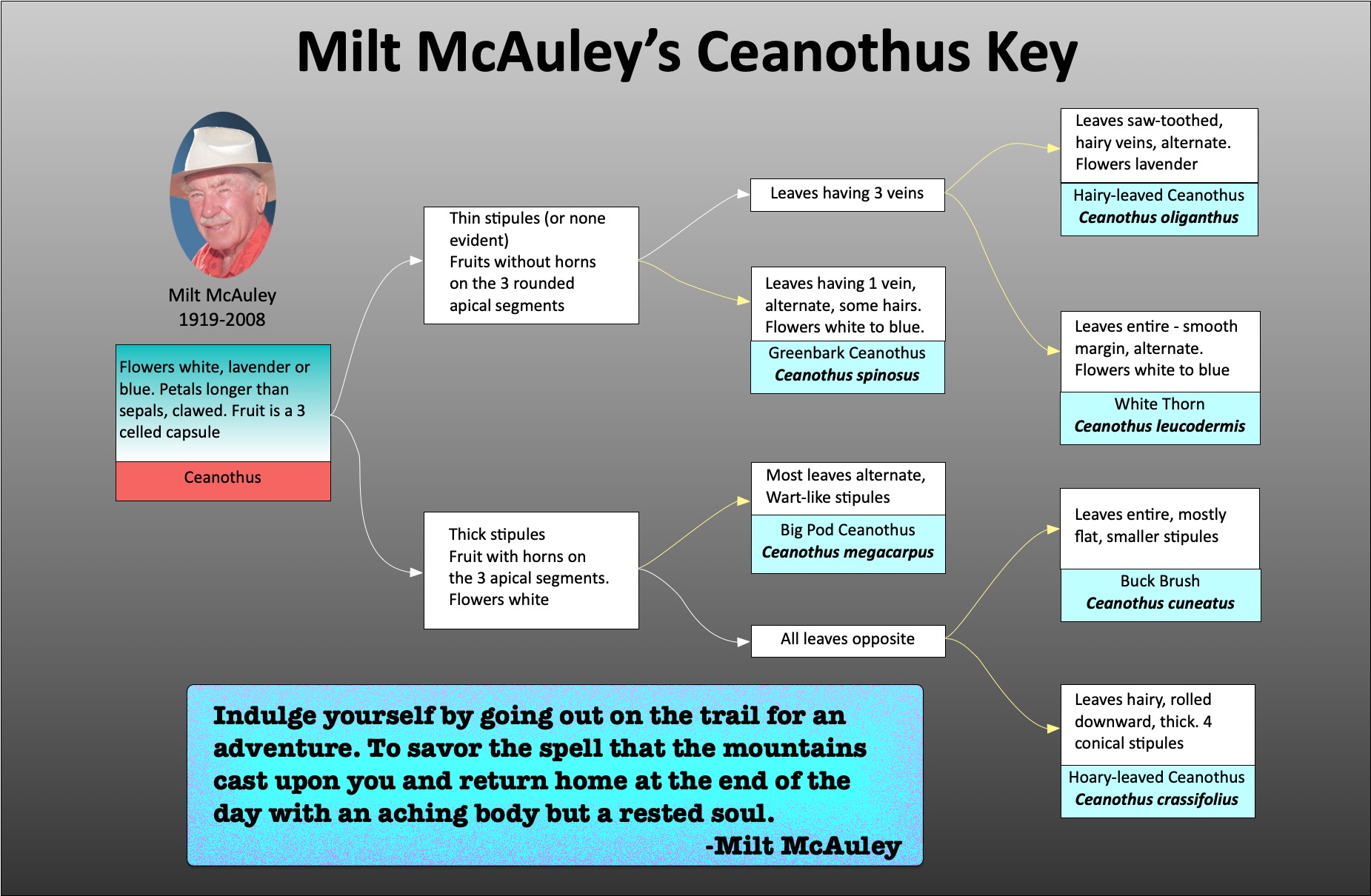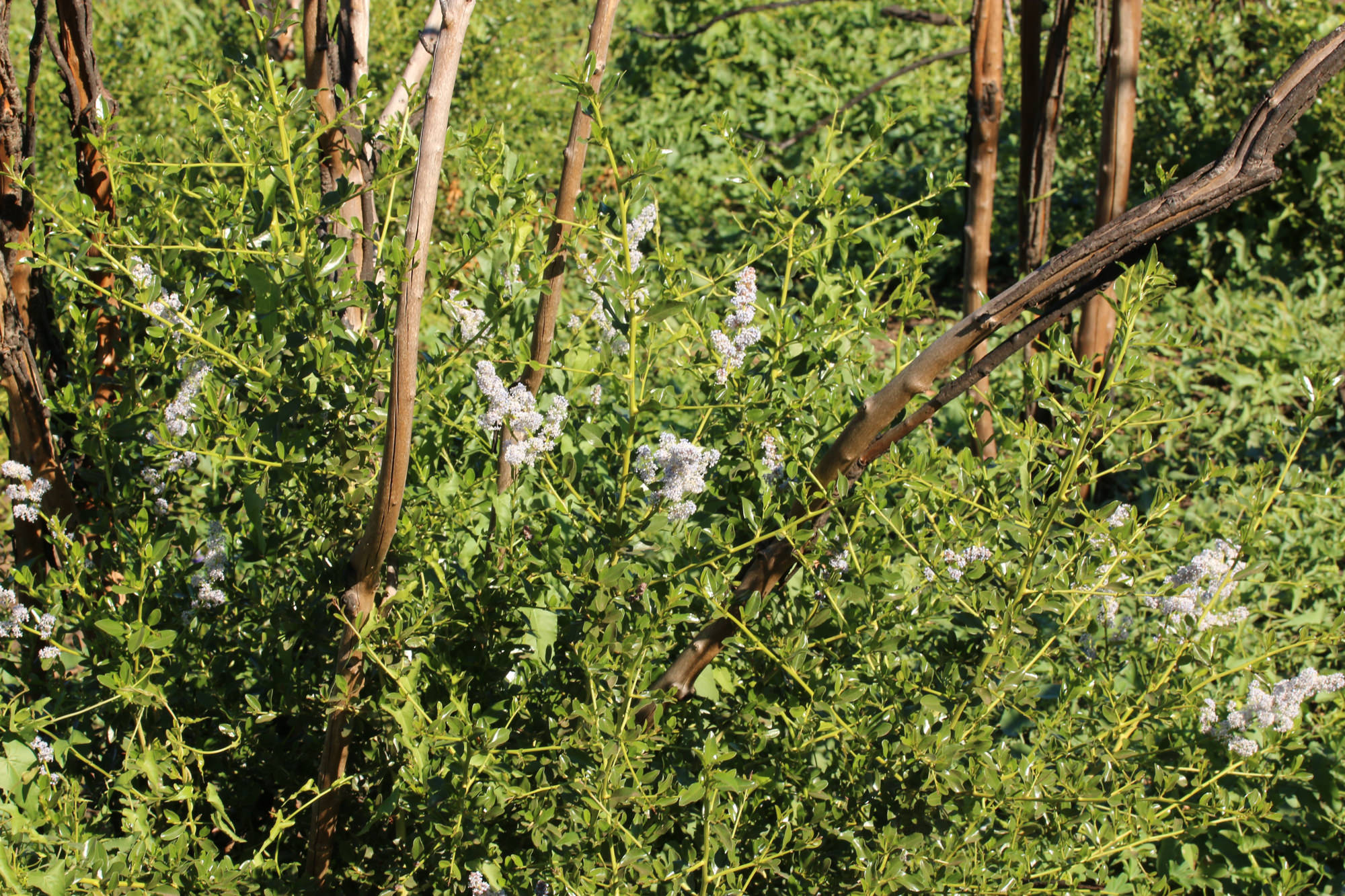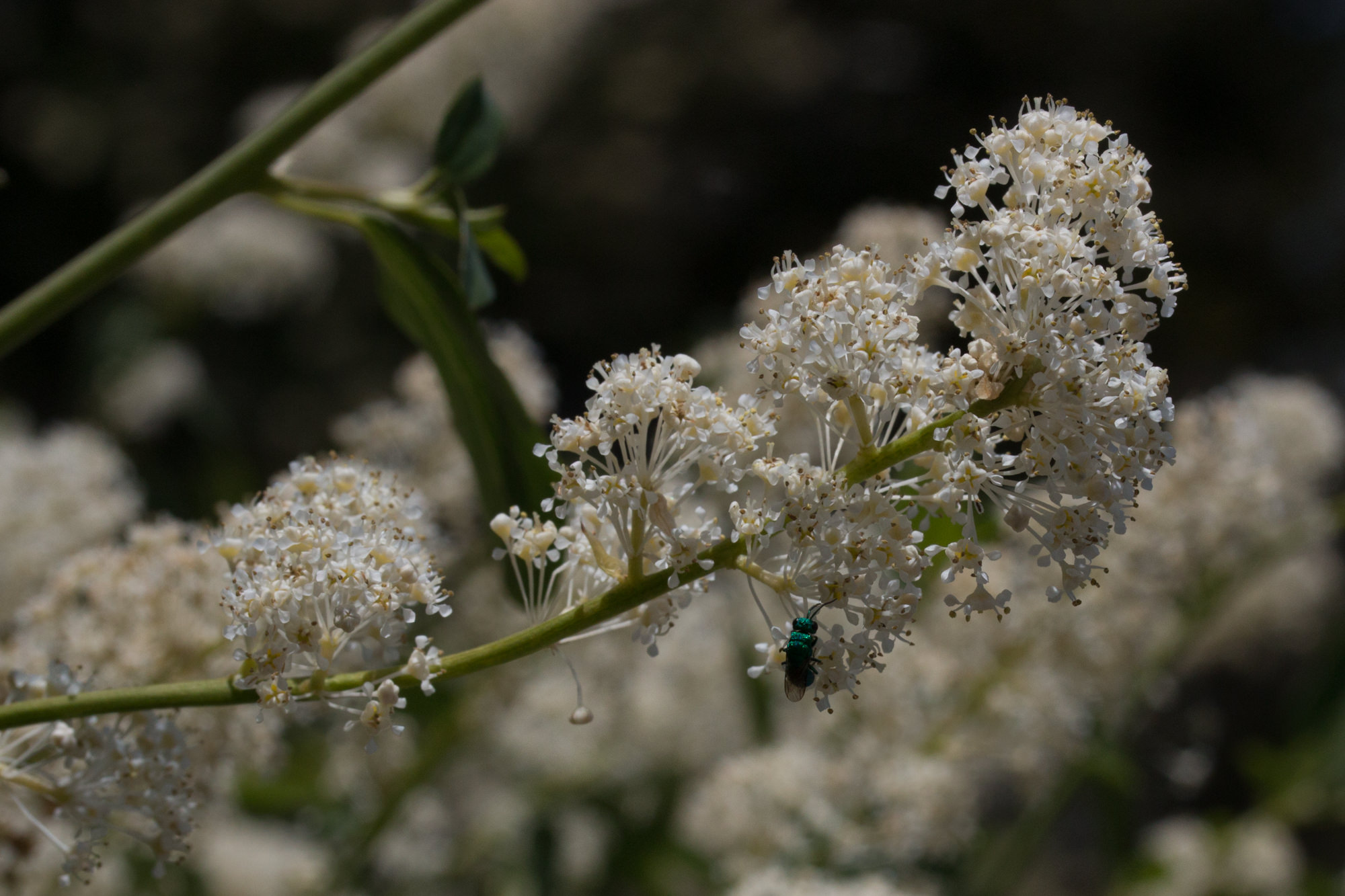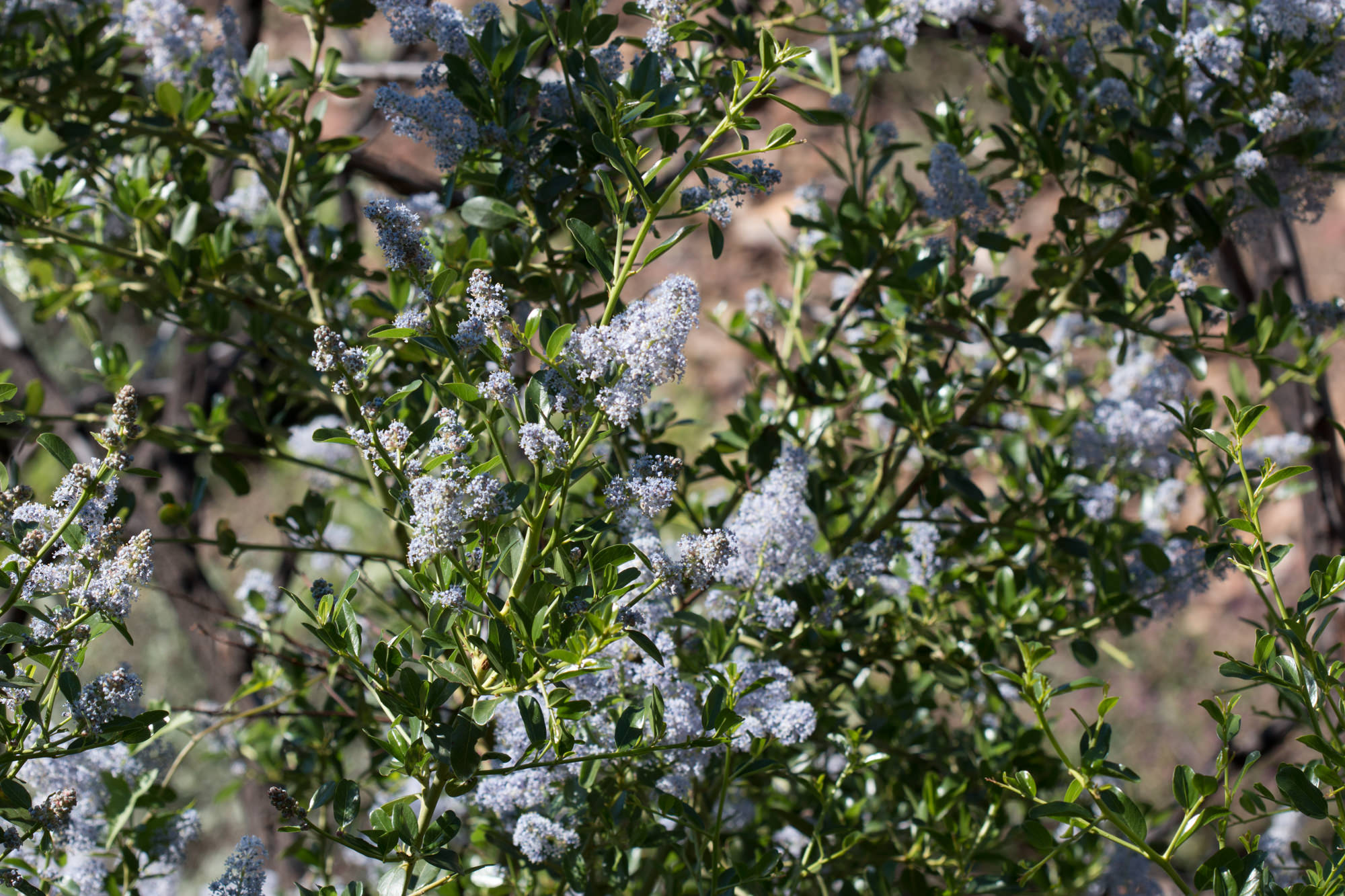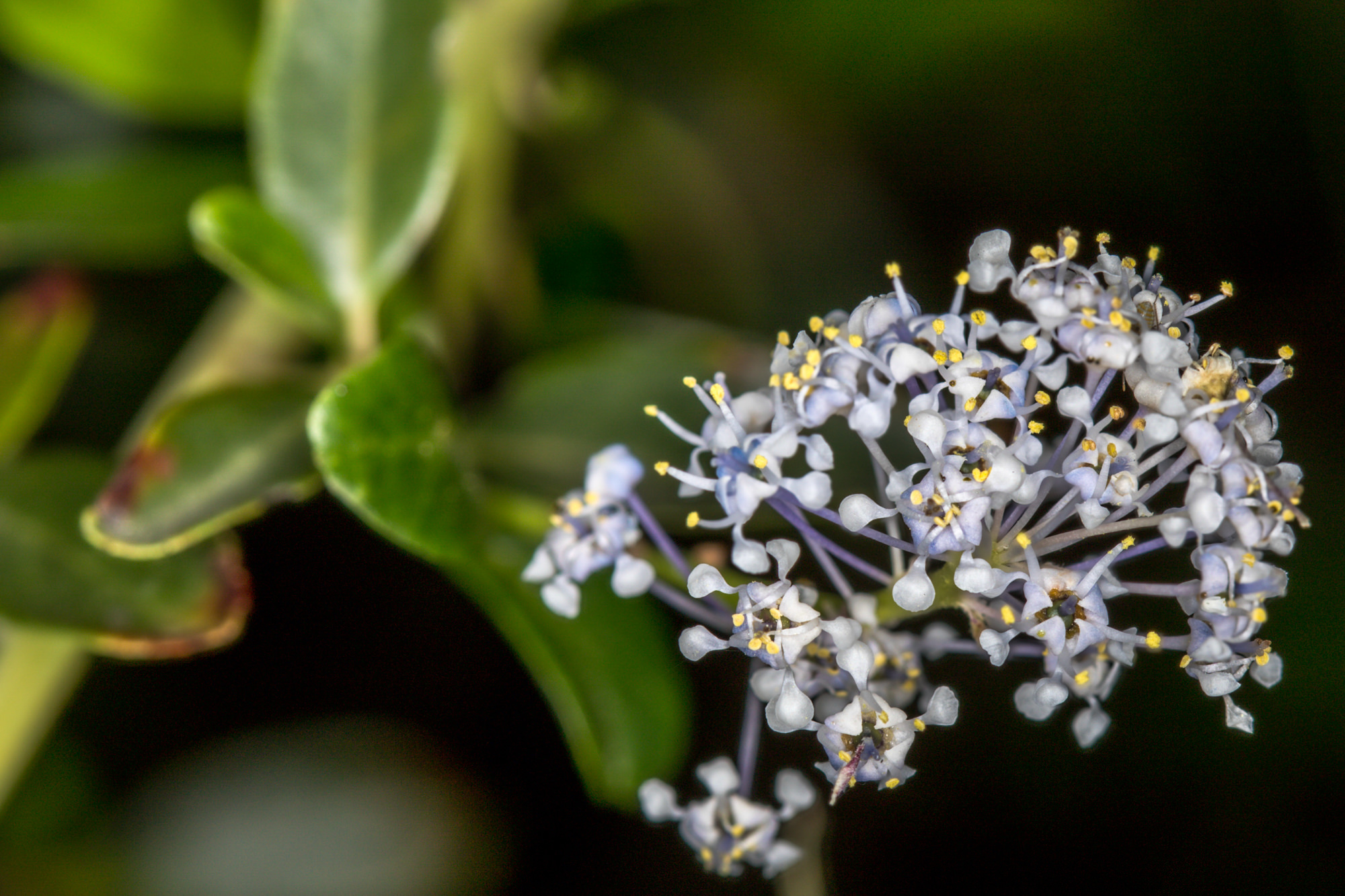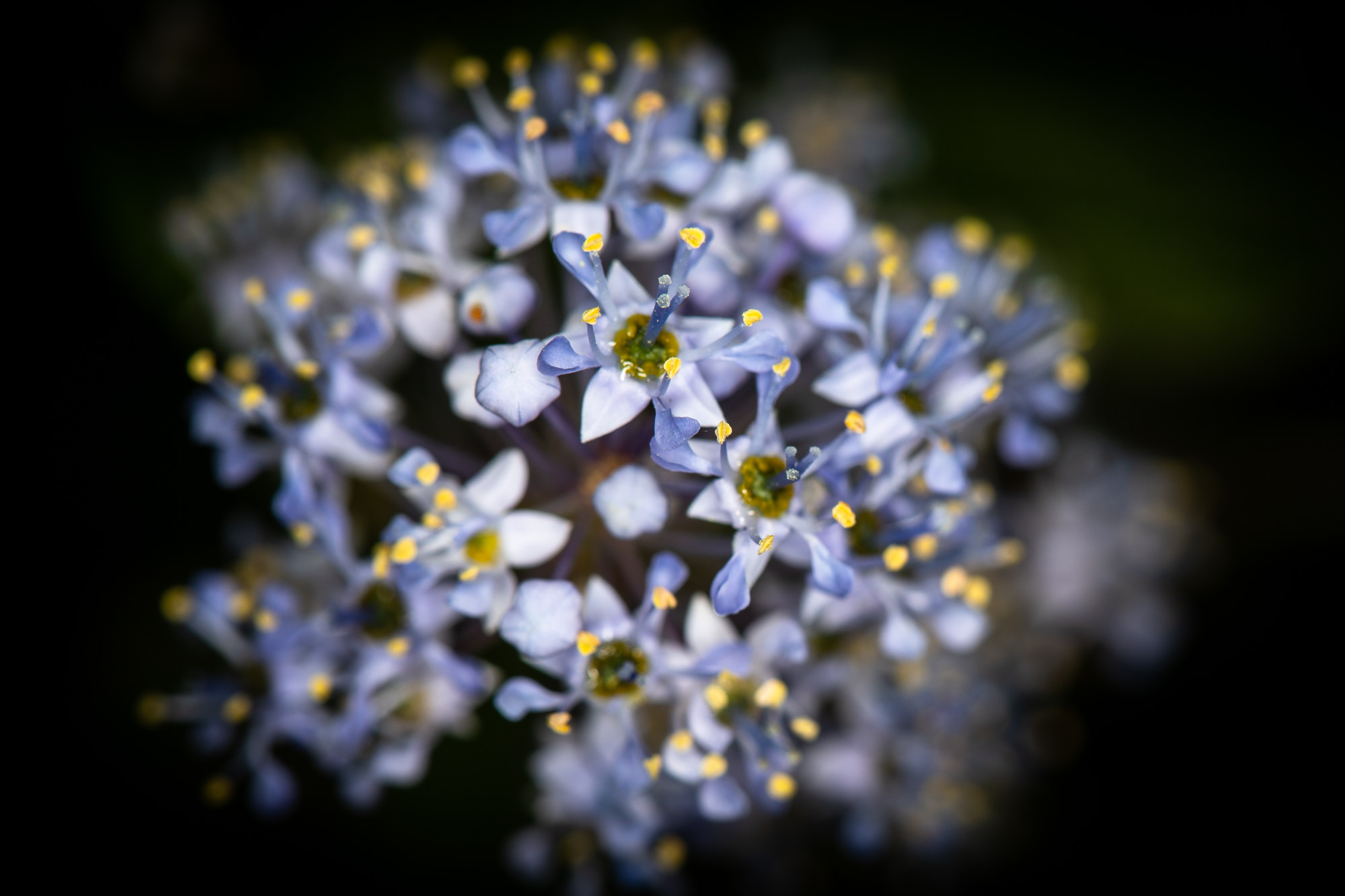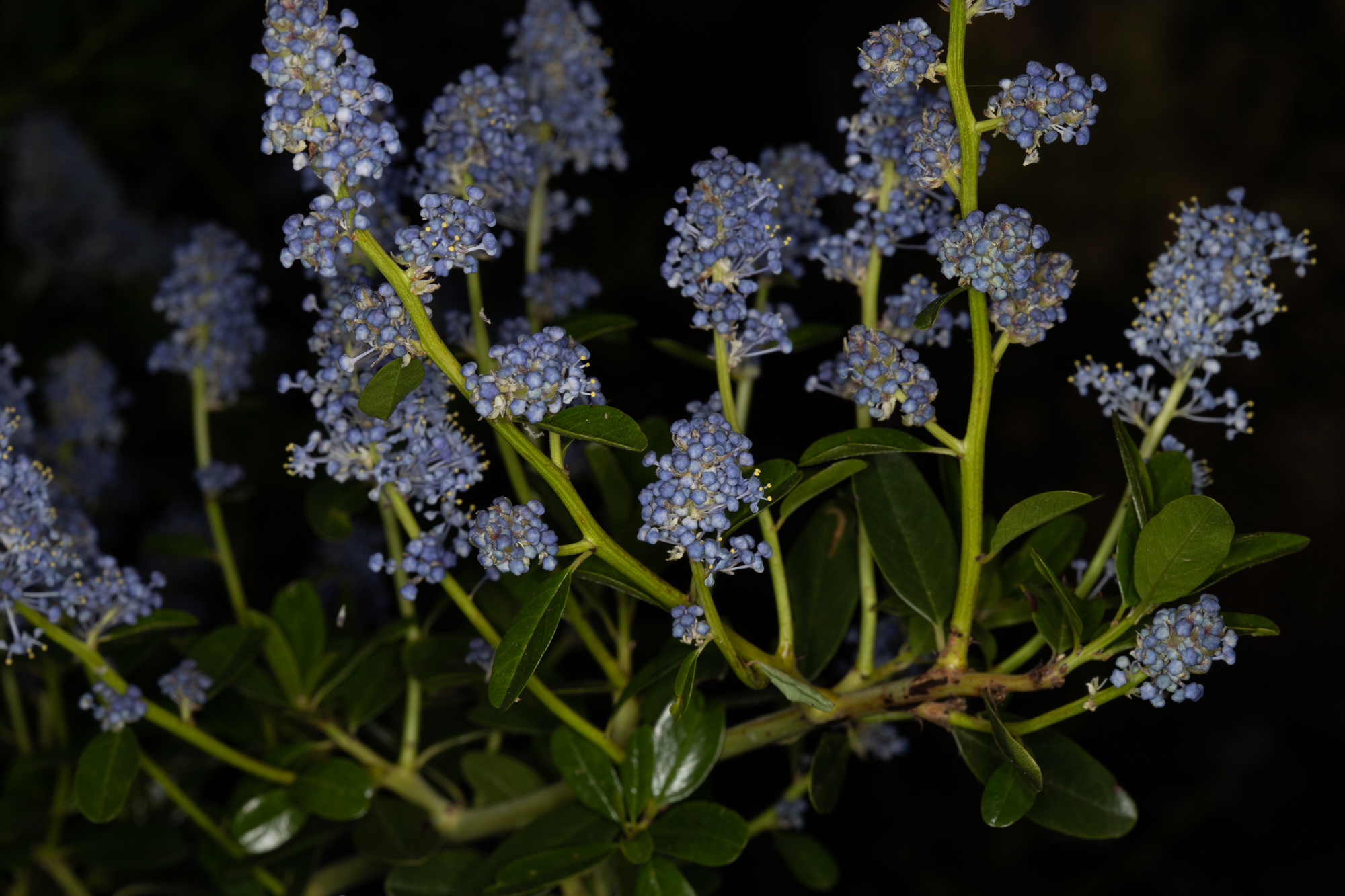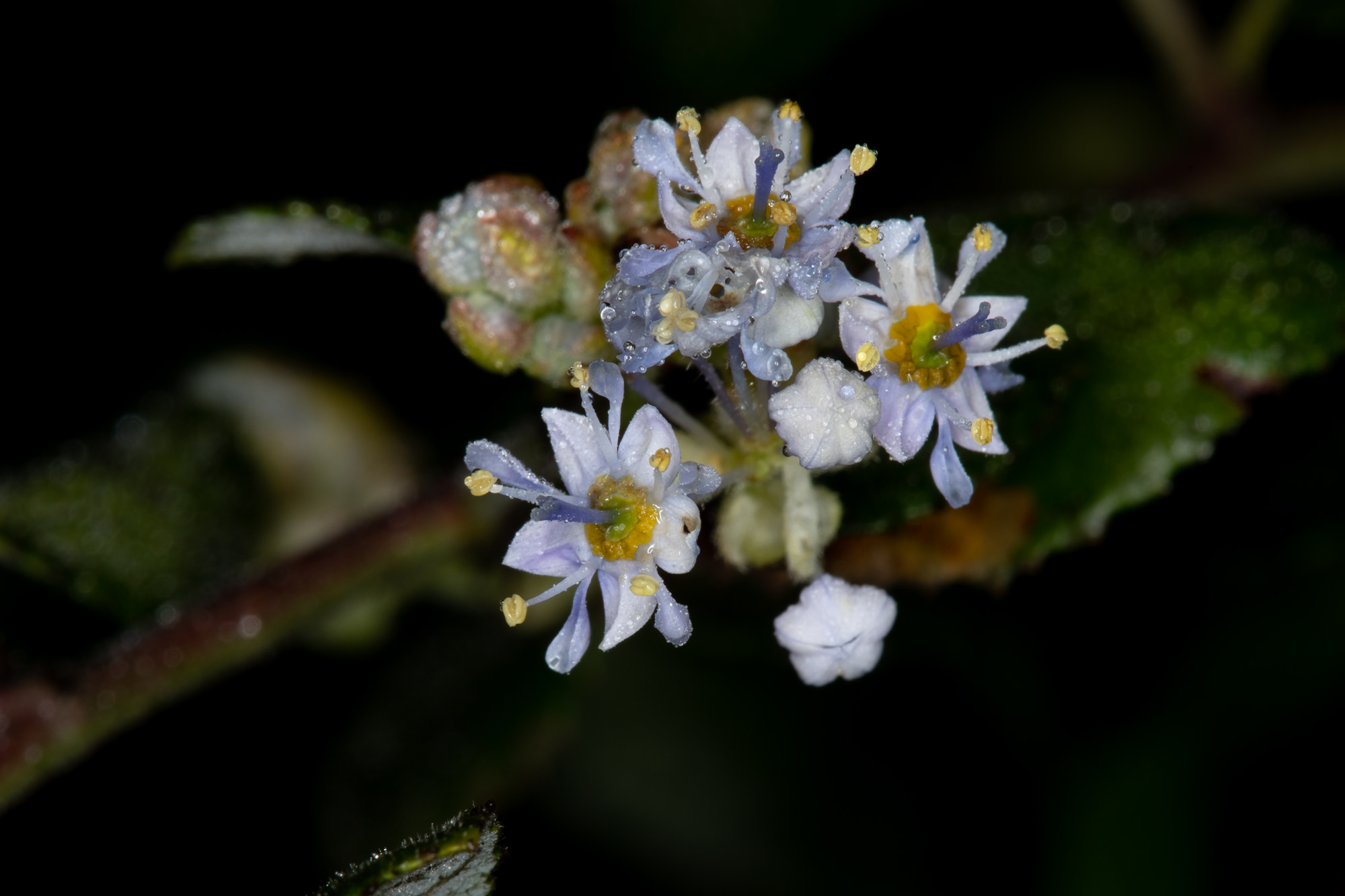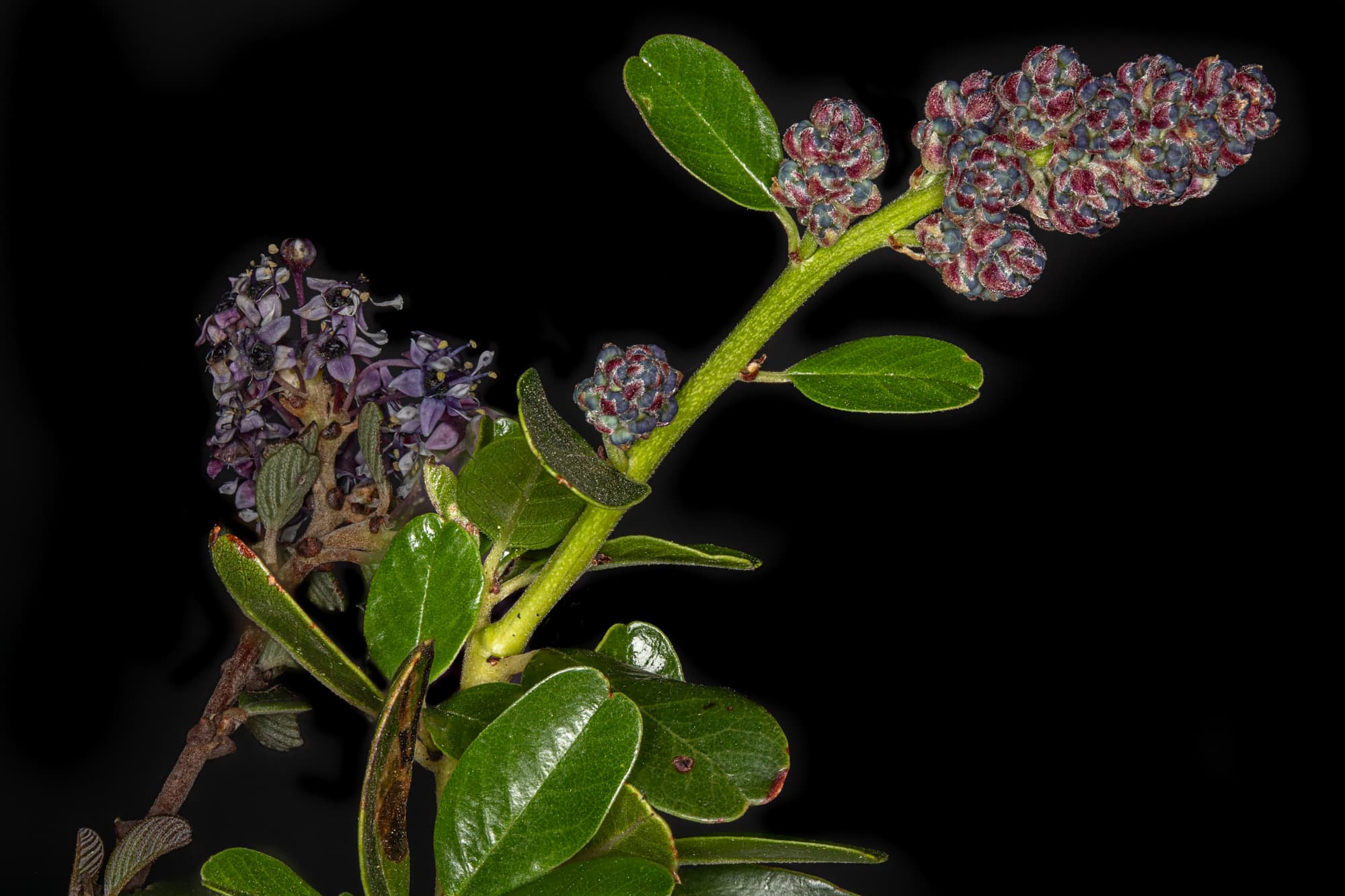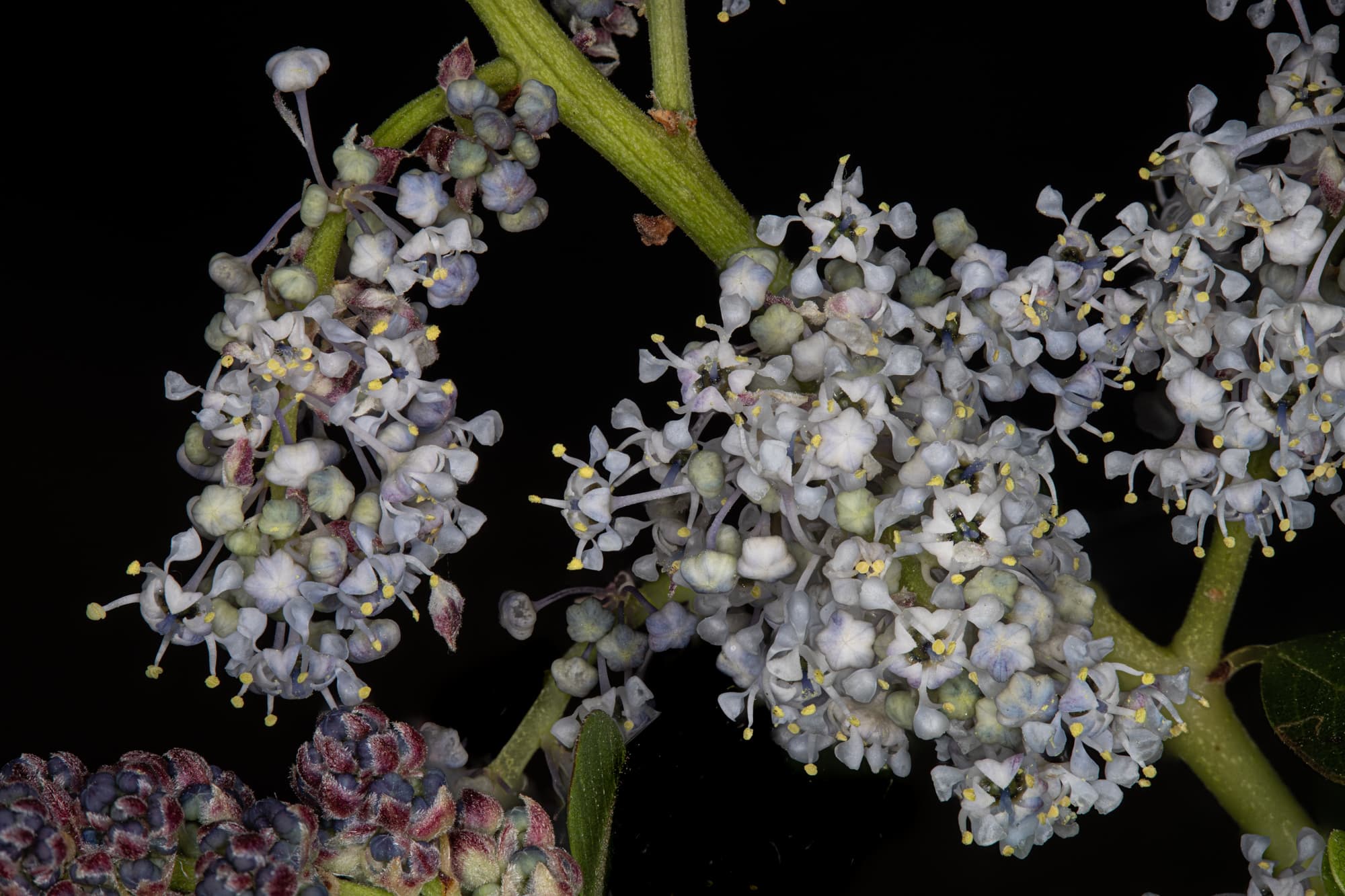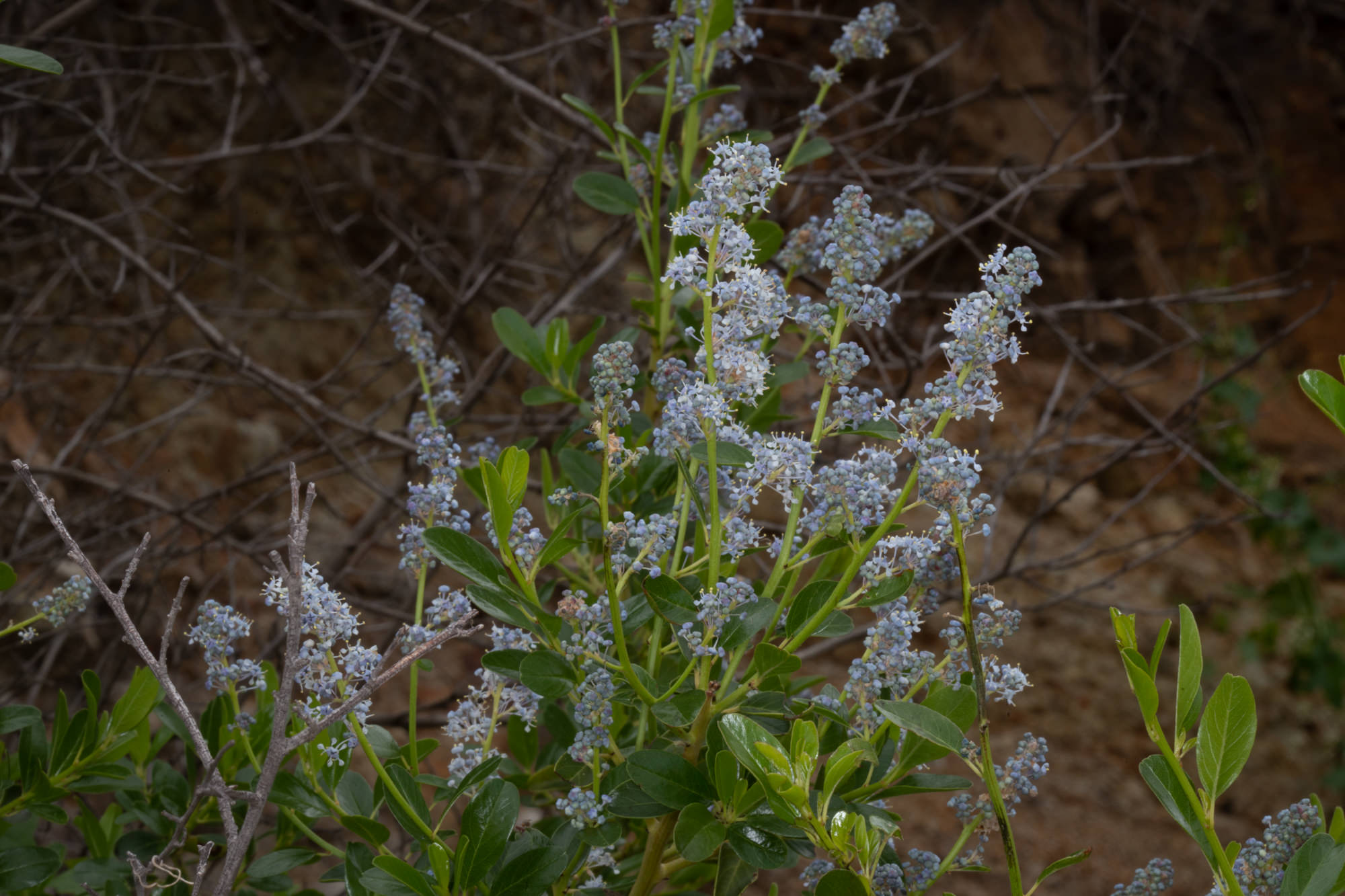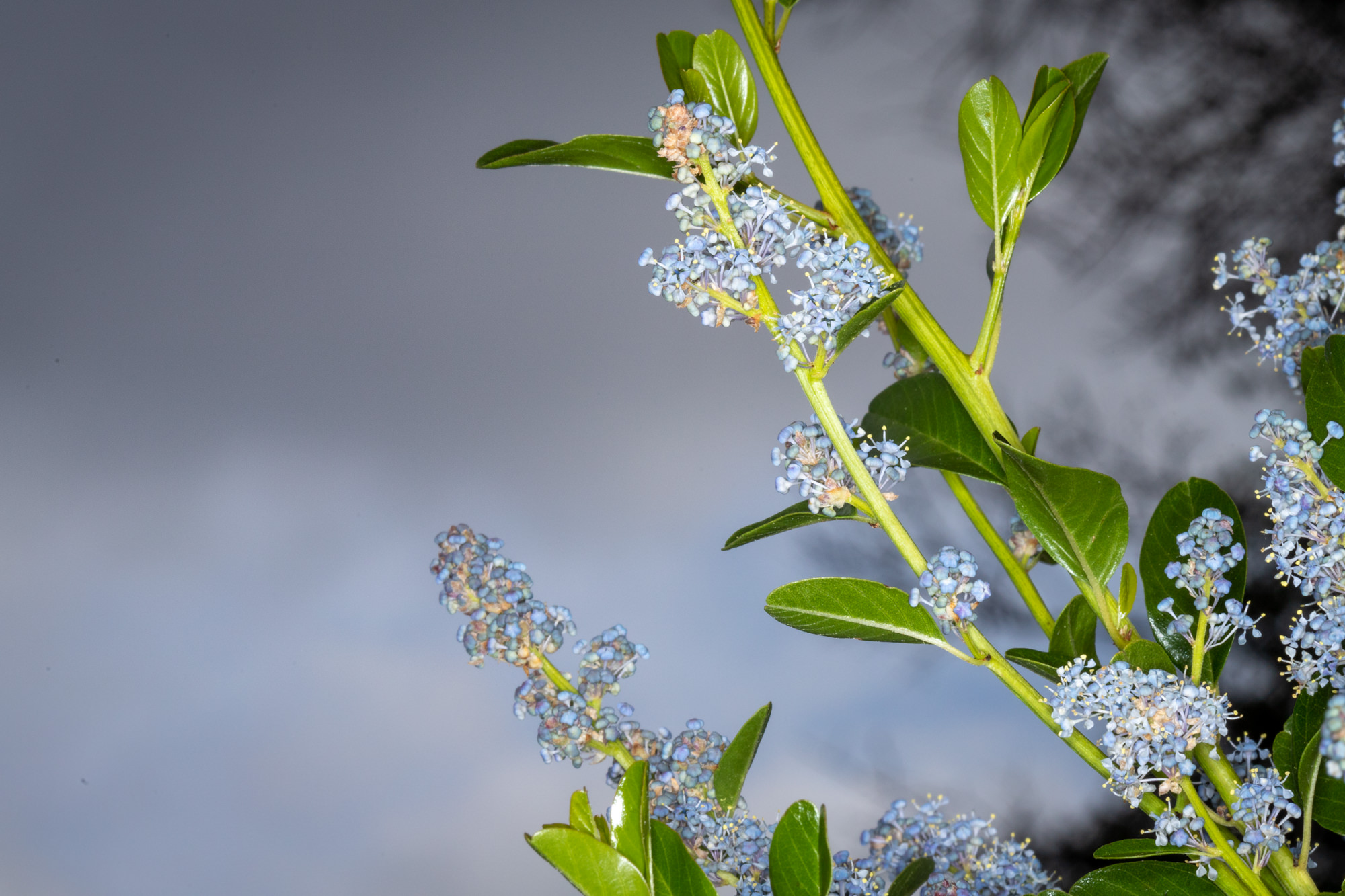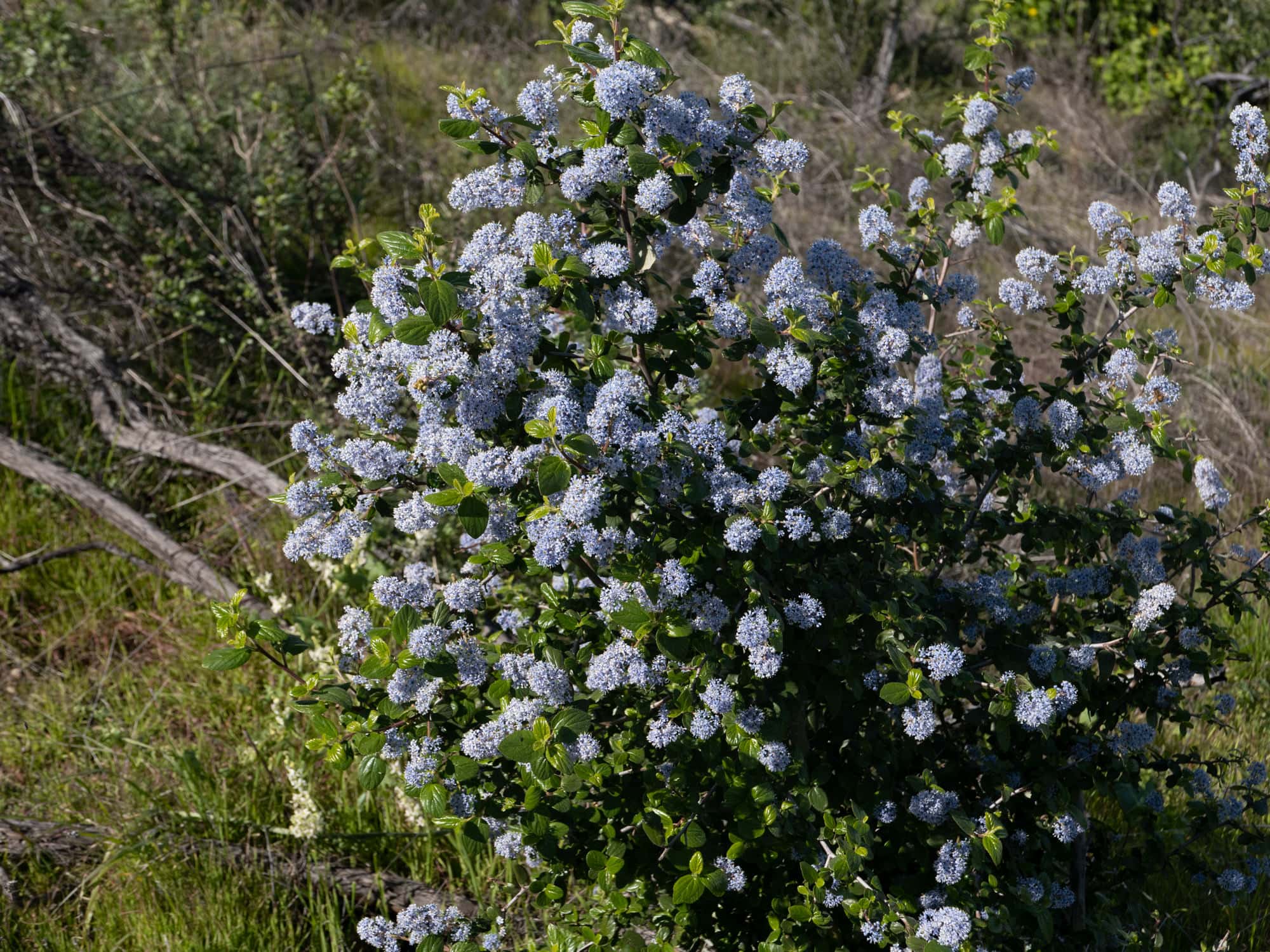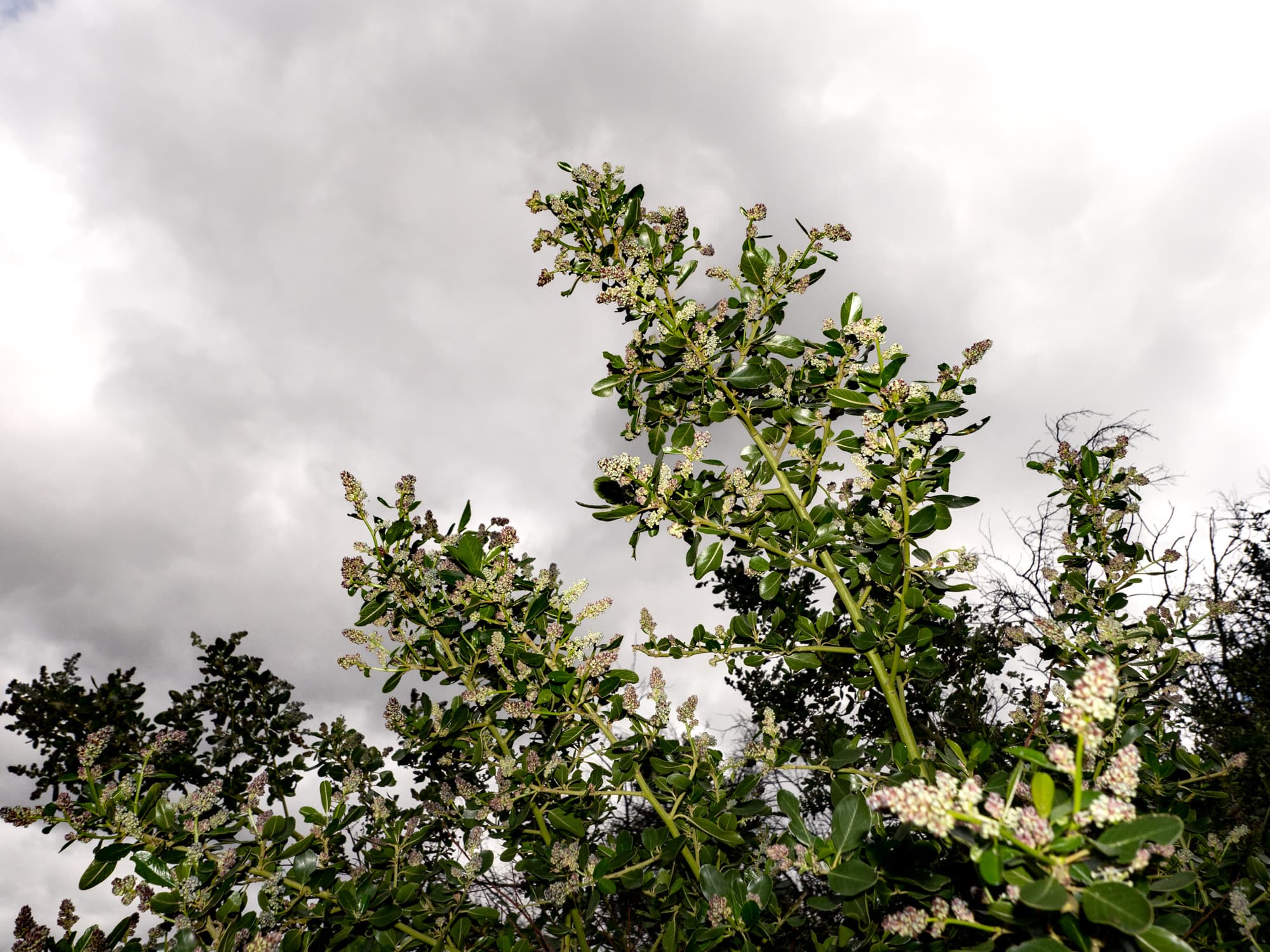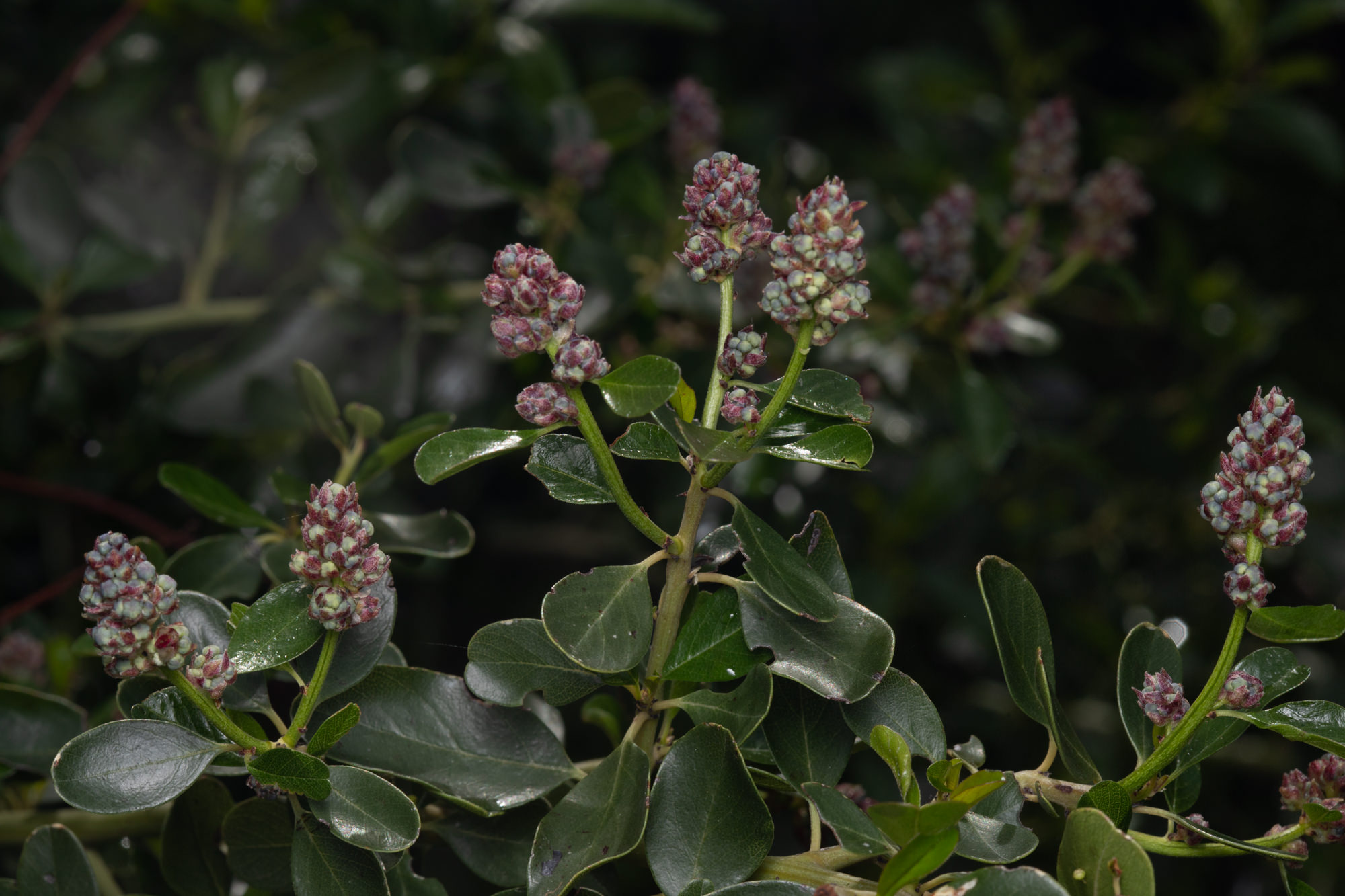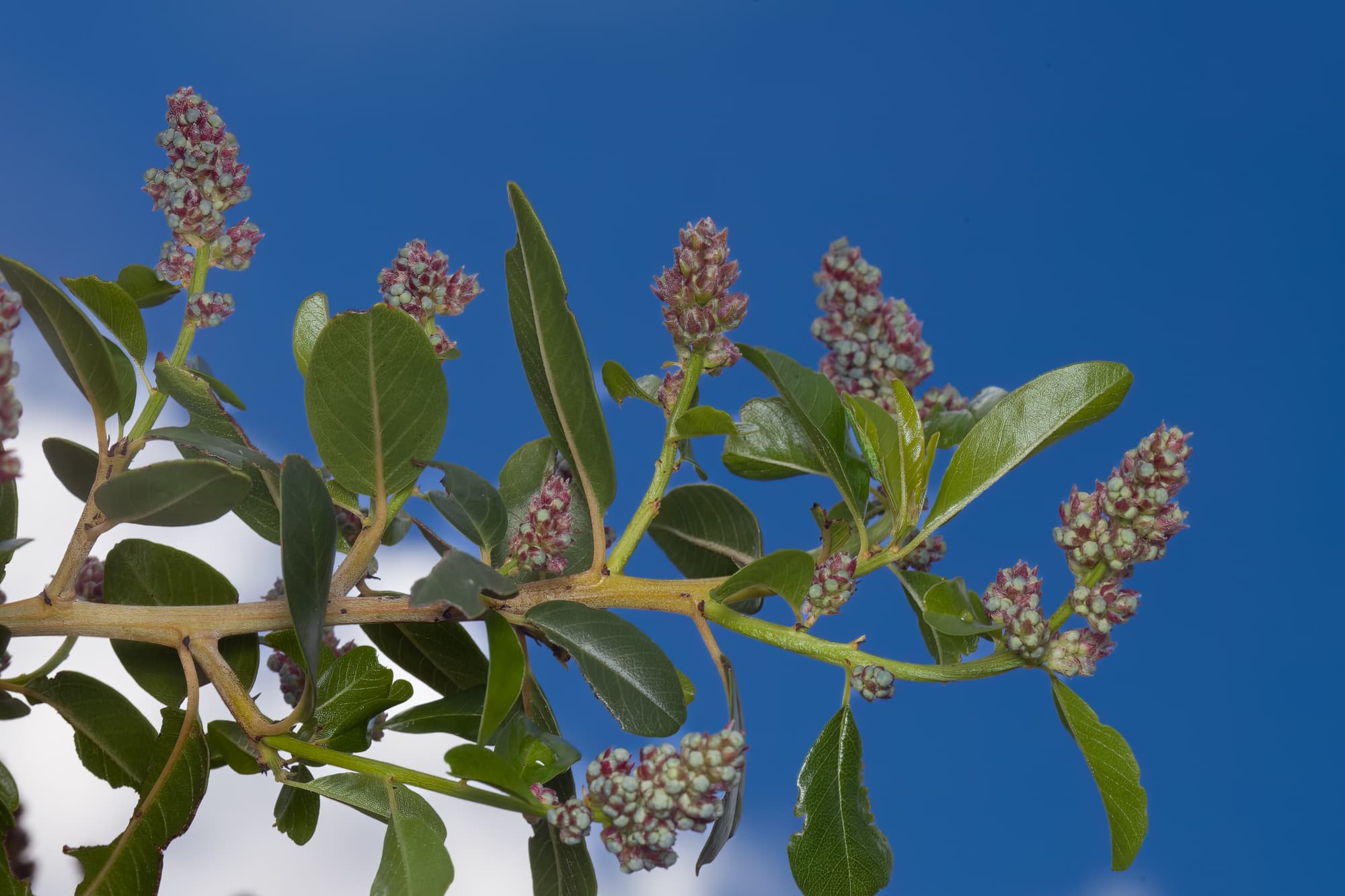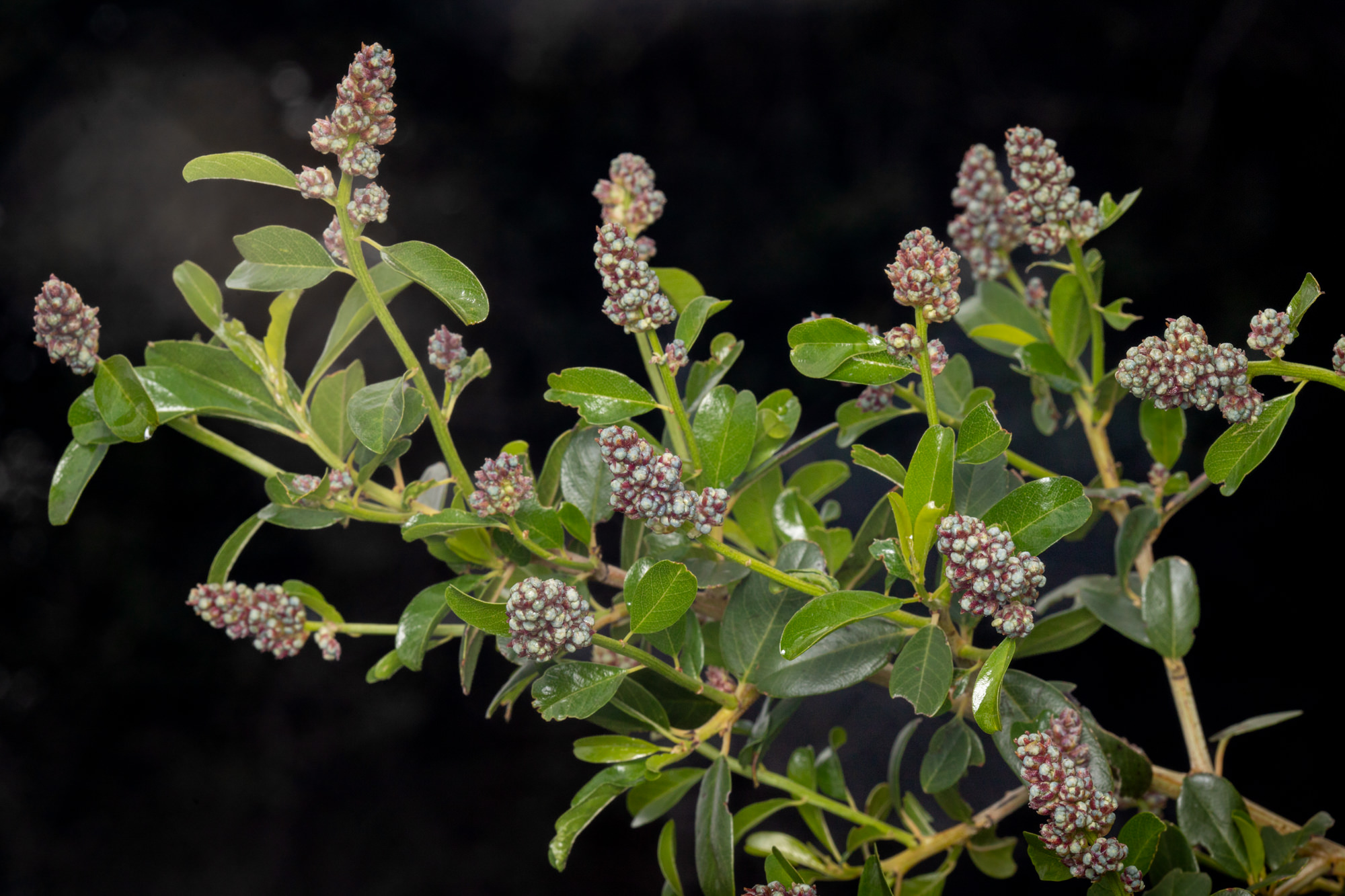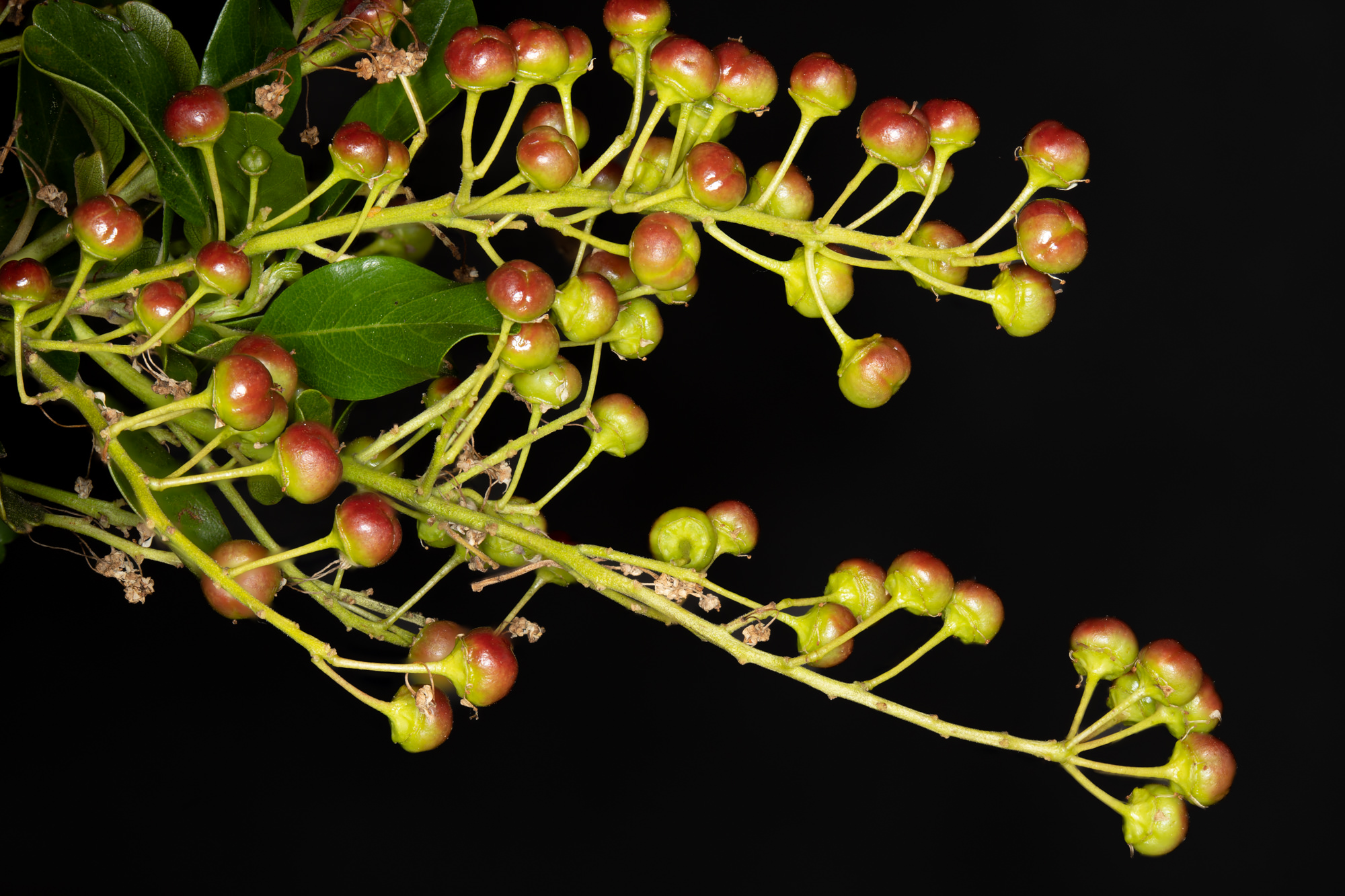Greenbark Ceanothus
- Ceanothus spinosus
| Common Name(s): | Greenbark Ceanothus |
| Scientific Name: | Ceanothus spinosus |
| Family: | Rhamnaceae (Buckthorn) |
| Plant Type: | Shrub or Tree |
| Size: | up to 20 feet |
| Habitat: | Chaparral |
| Blooms: | February to April |
| Fire Response: | Stump Sprout or Seed |
Greenbark ceanothus Ceanothus spinosus like Ceanothus megacarpus occupies a surprising amount of territory on the slopes of the Santa Monica Mountains. Late February into April, rivers of blue flowers flow down into the canyons. During this brief period of time, entire slopes can take on the color blue from millions of showy tiny ceanothus flowers in six inch clusters. The pleasant scent of the flowers may lure you but the numerous spikes warn you not to get too close!
Ceanothus spinosus is in the Rhamnaceae (Buckthorn) family and known by the common names greenbark ceanothus and redheart. It is native to the coastal mountains of southern California - San Luis Obispo County down and into northern Baja California. Preferred habitat is scrub and chaparral. This large treelike shrub can reach six meters (20 feet) under ideal conditions. Thorny, greenish-brown branches emerge from a trunk with rough bark. Our organization maintains trails, greenbark ceanothus is one those plants that encroaches upon the trail corridor. If it has been a year or more since the last maintenance and we have had good rains, this plant will block the trail. Cutting the plant back often reveals a "reddish" core - hence the common name "redheart". Removing the cut limbs without getting pricked by the spines is a learned skill.
Thick evergreen leaves with a single vein are up to 4 or 5 centimeters long, hairless on the upper surface occasionally lined with hairs on the underside and have smooth margins. The stipules (small leaf-like structures at the base of the leaf stem) are thin and fall off early.
Blooms are on flower clusters up to 15 centimeters (6 inches) long filled with clusters of white to pale blue flowers. The fruit contains 3 seeds in a smooth, less than half inch round capsule. Fruits do not have horns, as do some other members of the Ceanothus species.
Not surprisingly, many species of Ceanothus are well-known to hybridize, meaning that you may encounter a plant that looks like a blend of more than one species. This is a great plant for the garden. Many nurseries carry these hybrids.
Flowers will make a soapy lather when crushed in the hand with water. This was one of the several uses the Chumash and other indigenous peoples had for ceanothus.
Fire Response: Ceanothus spinosus regenerates both from sprouting root crowns and from seedling recruitment after fire.
www.calflora.net is the source of this info and the best site to learn the meanings of plant names!
Name Origin: Ceanothus: from the Greek keanothus, a name meaning thistle or spiny plant which was applied by Theophrastus and/or Dioscorides to an Old World plant believed by some to have been Cirsium arvense, and reused by Carl Linnaeus when he published it in 1753.
spinosus: spiny
Contributed by George Sherman
Featured Plants in the Rhamnaceae (Buckthorn) Family:
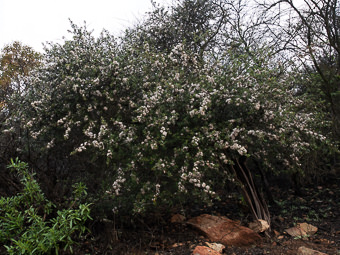
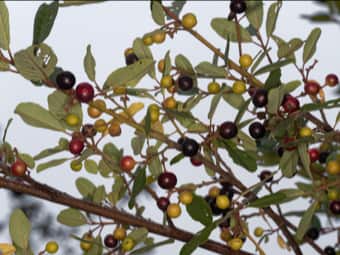
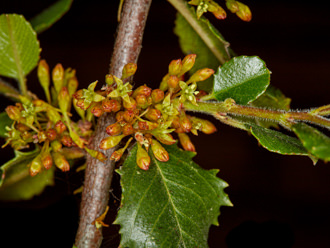
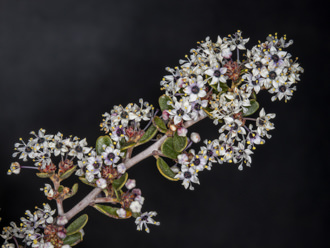
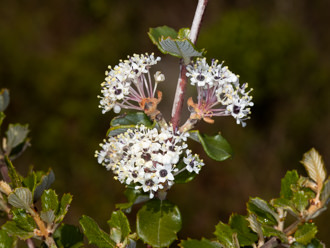
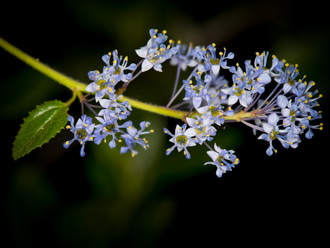
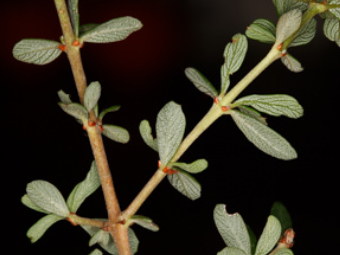
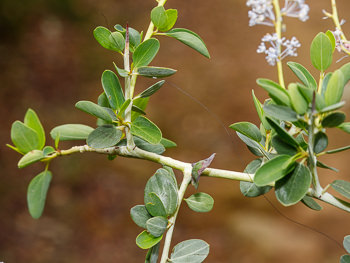
Last modified: May 17 2024 16:49:41.
Number of Images: 18
Image Size Total: 8,612,001
References:
Wildflowers of the Santa Monica Mountains, by Milt McAuleyFlowering Plants: The Santa Monica Mountains, Coastal and Chaparral Regions of Southern California, by Nancy Dale
Chumash Ethnobotany: Plant Knowledge Among the Chumash People, by Jan Timbrook
Leaf Shapes Primer - Botanical Terms for Leaves: - Link
